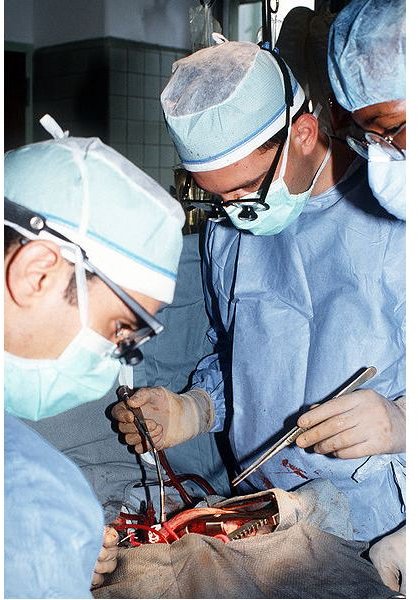Types of Hysterectomies: Understanding Each Type of Hysterectomy
Overview
Hysterectomy is the removal of the uterus through surgery. This non-obstetrical surgical procedure is performed if a woman is found to be suffering from uterine fibroids, cervical dysplasia and endometriosis. Typically, this procedure takes about two hours, and recovery time depends on the type of surgery performed.
There are different types of hysterectomies that a patient may go through, depending on the patient’s medical condition. No matter which type of hysterectomy that a woman will go through, there is a standard procedure to be done before undergoing surgery. Pelvic exam, pap smear, pelvic ultrasound and a Complete Blood Count should be done in order to decide which type is best for the patient’s condition.
Learn more about the method, recovery time, benefits and risks of each type of hysterectomy.
Total Abdominal Hysterectomy
A woman who has endometriosis, large uterine fibroids, cancer of the ovaries and the uterus is usually advised to undergo total abdominal hysterectomy. Severe pelvic pain, with undetermined cause despite evaluation made during non-surgical treatments, may also require this type of hysterectomy. In this surgical procedure, a doctor makes a horizontal or vertical incision (about 6 to 8 inches long) in the lower abdomen of the patient to remove the uterus, including the cervix. A vertical incision is made from the navel to the pubic bone. This is the ideal type of incision to provide more room to investigate the cause of an illness or when there is a possibility for cancer. A horizontal incision runs along above the pubic hairline, and is often done in cases of a benign disease.
In total abdominal hysterectomy, the entire abdomen and pelvic area can be fully examined by the doctor. This is an advantage for women with cancer or abnormal growths that are of undefined or of unclear cause. However, women who have undergone this surgical procedure are incapable of bearing a child. Women of childbearing age are not usually advised to go through this type of hysterectomy unless there is cancer.
Among the other types of hysterectomy, total abdominal hysterectomy has the longest recovery period because of the incision that is made in the abdomen.
Vaginal Hysterectomy
In vaginal hysterectomy, the uterus is removed through the vagina. This type of hysterectomy is ideal for patients with uterine prolapse,cervical dysplasia and endometrial hyperplasia. Throughout this procedure, a woman is required to have her legs raised up, with her feet securely placed on a stirrup device. Because the vagina is the means in which the uterus is removed, this procedure is not recommended to women with a small vaginal canal and who have not gone through vaginal childbirth. Women with a uterus that is too large, or those that cannot have their legs raised up for a long period of time are also not advised to undergo vaginal hysterectomy.
A laparoscopy, a thin viewing tube that has a magnifying glass-like material at its end, may be used during vaginal hysterectomy. This device enables the doctor to inspect thoroughly the entire abdomen while the procedure is being done. Laparoscopy-assisted vaginal hysterectomy is required among patients that are in the early stage of endometrial cancer (to check the lack of spread of cancer) or if a woman is to undergo oophorectomy (surgical removal of the ovaries).
Since there is no external incision made, there is no scarring after vaginal hysterectomy is performed. A woman who has undergone this procedure is still able to bear a child. Recovery time is also shorter because of the absence of any incision, thus it is less expensive (although laparoscopy-assisted vaginal hysterectomy is more expensive).
The only downside of this surgical procedure is that it can lead to painful or uncomfortable sexual intercourse, due to the shortening or tightening of the vagina that is done during surgery.
Supracervical Hysterectomy
Supracervical hysterectomy is the removal of the uterus, while sparing the cervix. Women who have a minimal risk of developing cancer, or those with severe endometriosis where the cervix is better off left in its place are candidates for this surgical procedure. Compared with the other types of hysterectomies, this procedure takes less time to perform and recovery is quicker. It also decreases the risk of vaginal prolapse because of the added support that it gives to the vagina.
The only drawback of supracervical hysterectomy is that cancer may not be totally prevented because of the remaining “stump” or cervix. Menses also stop because of the cauterization of the endocervix.
Radical Hysterectomy
This surgical procedure is even more extensive than abdominal hysterectomy because it includes removal of the tissues surrounding the uterus as well as the upper vagina and the pelvic lymph nodes. Radical hysterectomy is only performed if a woman is in the early stage of cervical cancer or endometrial cancer.
Because this procedure is the most complicated and extensive among all type of hysterectomy, recovery period is longer. There is also a risk of injury to the urinary and bowels systems.
Conclusion
Hysterectomy is a delicate surgical procedure that is performed in women suffering from cancer of the ovaries, uterus, cervix, and those with unusual and severe cases of pelvic pain. Each type of hysterectomy is recommended for particular health conditions, as well as the physical makeup of the patient. In deciding on the most appropriate type of surgical procedure to be performed, the patient is required to undergo tests such as Complete Blood Count, pap smear test, complete pelvic exam and pelvic ultrasound.
Although there are benefits in each surgical procedure, there are also complications or risks that may arise. Infection, bleeding and pain around the incision or area where the procedure is done may be likely. Also, the possibility of bearing a child may also be affected, as in the case of total abdominal hysterectomy.
References
Trupin, Suzanne, MD, “Hysterectomy Procedure Options,” https://www.medicinenet.com/hysterectomy/article.htm
Hysterectomy, https://www.nlm.nih.gov/medlineplus/hysterectomy.html
